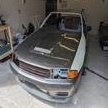Announcements
-
Similar Content
-
Latest Posts
-
Front seats now in, fixing a little rust then front doors sealed up again finished. had to install a fire extinguisher within arms distance of drivers seat for hill climb regulations. little bit of good old silo diff action lol IMG_9146.mov
-
If I had logged into the forum and saw that I would have Missed out again.
-
By RealR33_1994 · Posted
Mate what's ur email I can point u in direction of ur car maybe -
Is the A/C compressor supposed to keep kicking in and the revs go up every so often as a result? (for a r34 gtt) Mine turns on roughly every 15-20 seconds if I remember correctly. I know on my other car it doesn't seem to do that but different car I guess. I've had my car re-gassed and it still blows ice cold air after well over a year but have always had this happening.
-







Recommended Posts
Create an account or sign in to comment
You need to be a member in order to leave a comment
Create an account
Sign up for a new account in our community. It's easy!
Register a new accountSign in
Already have an account? Sign in here.
Sign In Now